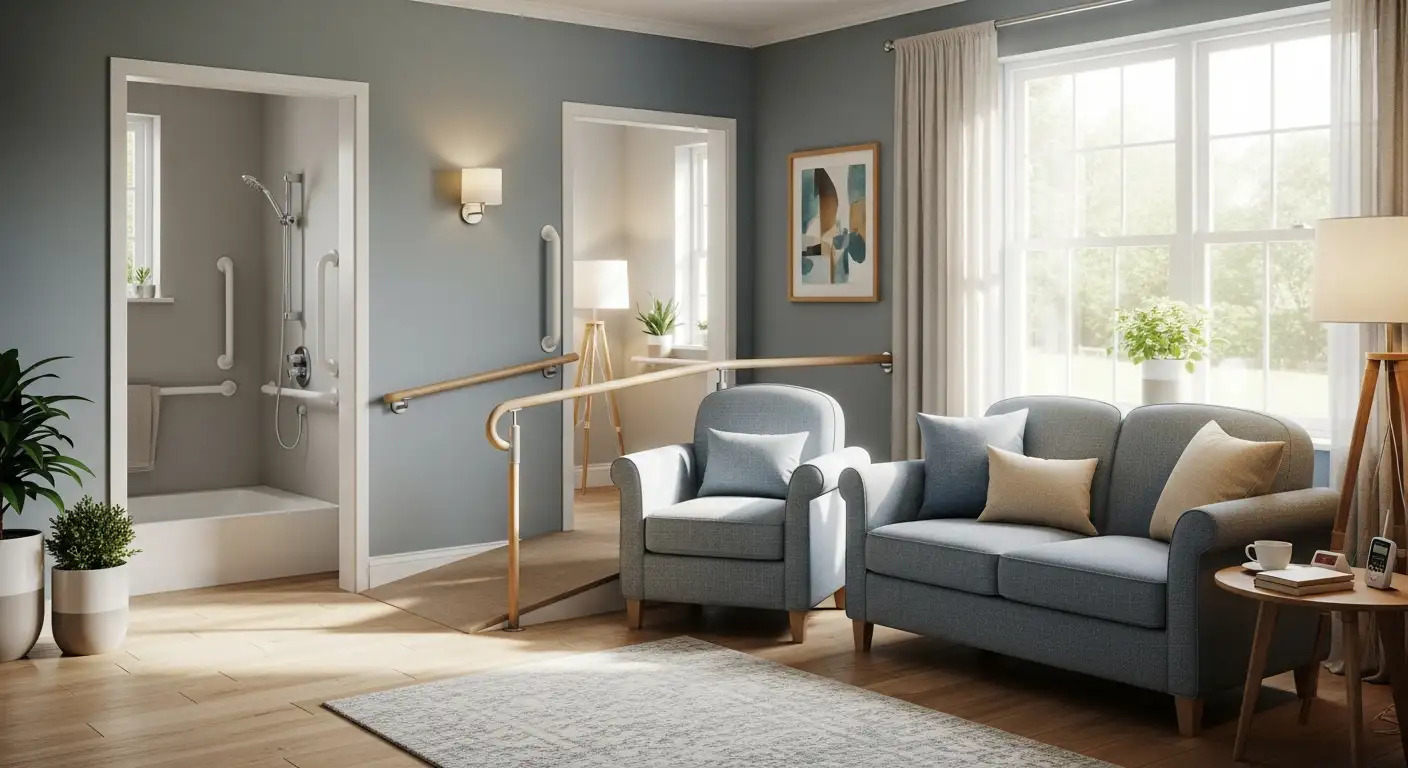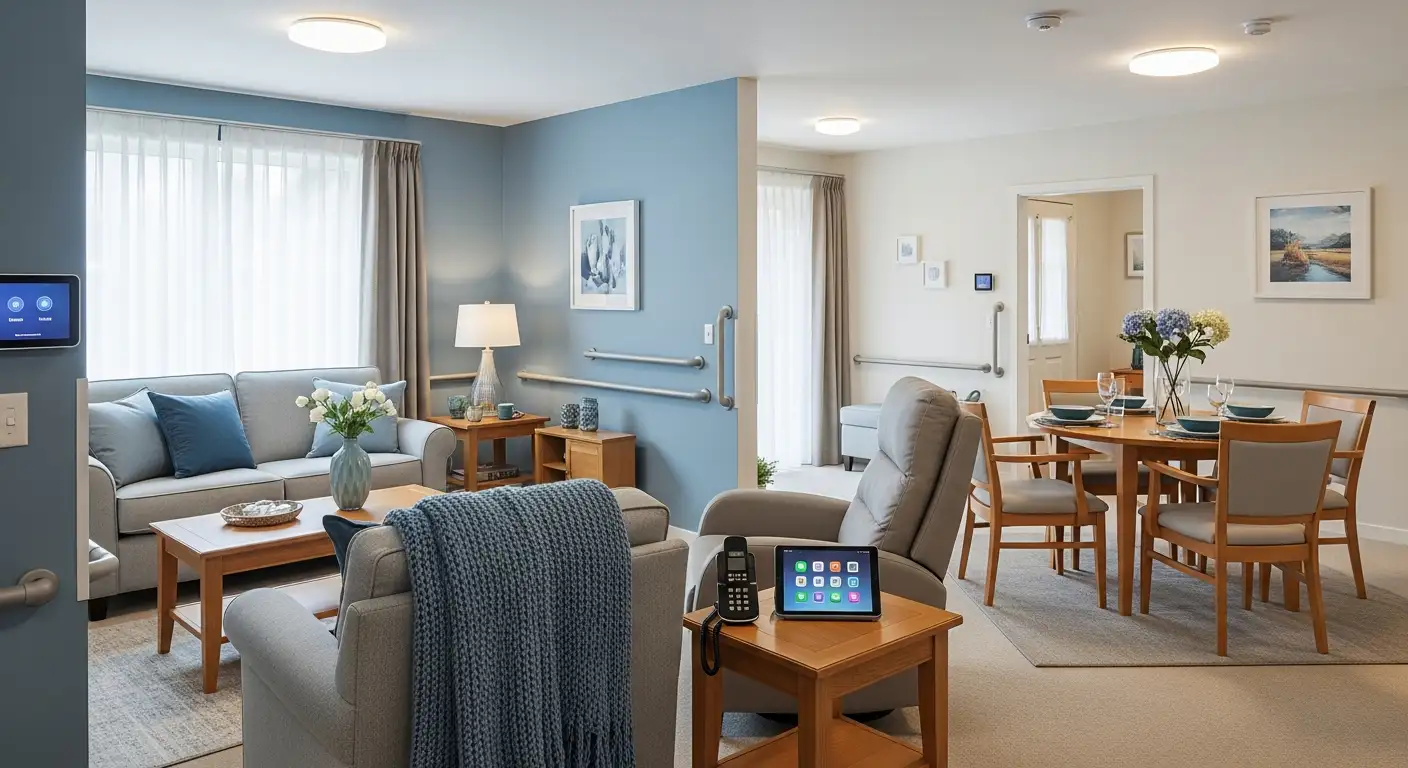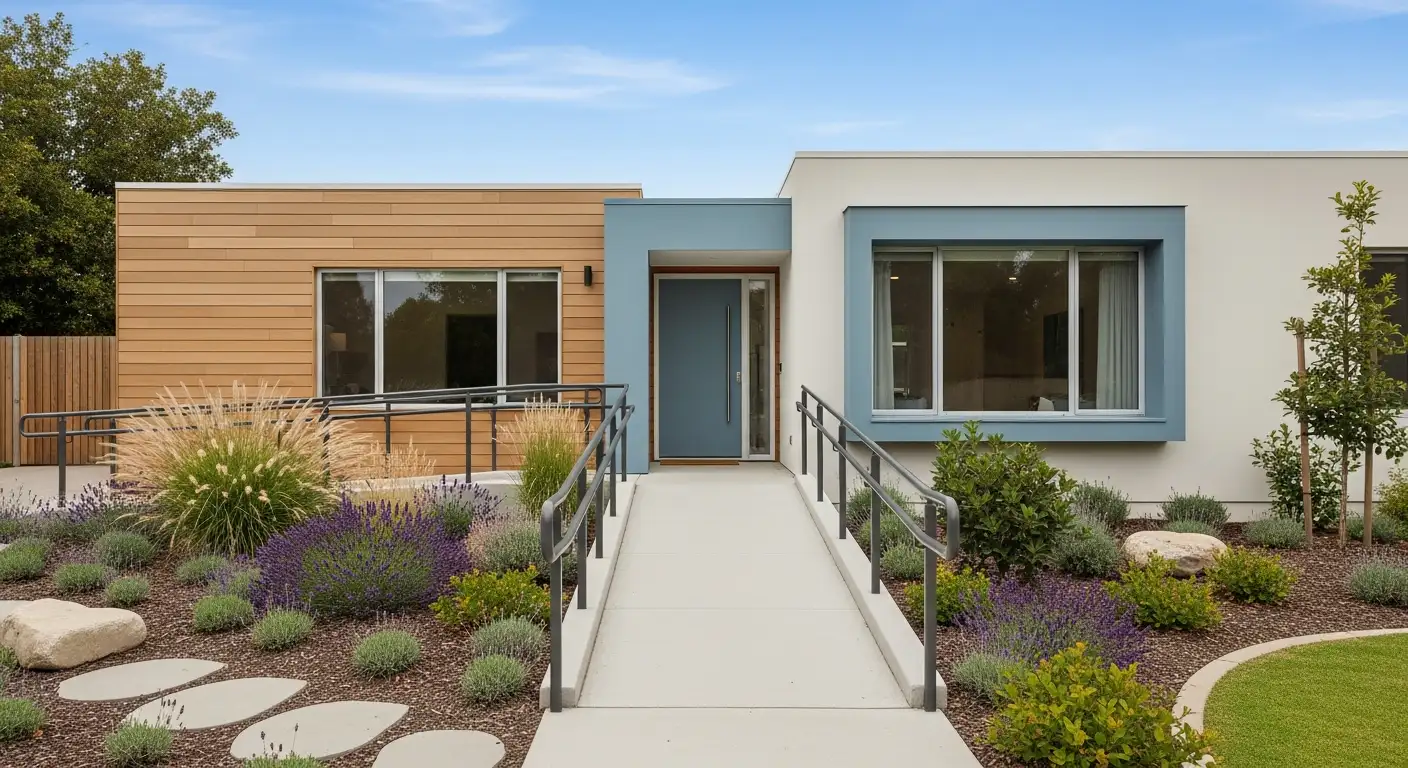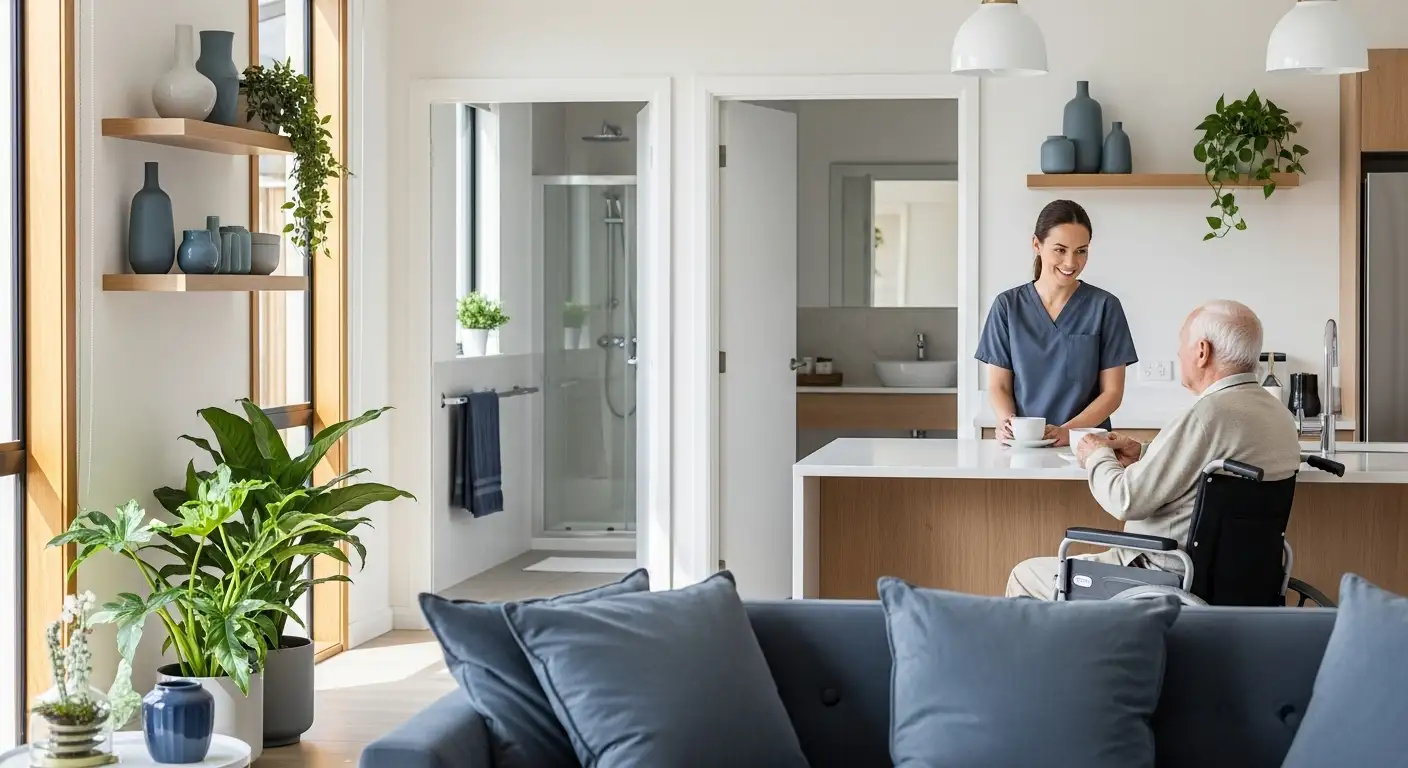Tips for choosing between Medicaid waiver and private pay home care
Navigating Your Home Care Options: A Guide to Making Informed Choices

Understanding Your Care Options: Medicaid Waivers vs. Private Pay
Deciding between Medicaid-funded home and community-based services (HCBS) waivers and private pay home care services is a crucial step for individuals seeking supportive care in their own homes. Each option offers distinct benefits, eligibility criteria, coverage details, and financial considerations. This guide explores these differences comprehensively, providing the insights needed to make a well-informed decision tailored to individual needs, financial circumstances, and long-term care goals.
Overview of Medicaid and Medicaid Waivers
What are Medicaid's traditional services?
Traditional Medicaid is a joint federal and state program that provides health coverage mainly for low-income individuals and families. It covers a broad range of services, including doctor visits, hospital stays, prescriptions, and preventive care. This program is suitable for those with short-term health needs, managing illnesses, recovering from surgeries, or needing routine preventive services such as immunizations and pediatric care.
How do Medicaid waivers increase flexibility?
Medicaid Waivers, especially the Home and Community-Based Services (HCBS) waivers, allow states to extend services beyond traditional offerings. They give states the ability to tailor programs to specific populations needing long-term or in-home support. These waivers enable the provision of personalized services like home modifications, assistance with daily activities, and respite care. Unlike the standard Medicaid plan, waivers support innovative and expanded care options, especially focusing on enabling individuals to stay in their homes and communities.
Who are the target populations for Medicaid programs?
Traditional Medicaid generally serves low-income families, pregnant women, the elderly, and people with disabilities who need general healthcare services. In contrast, Medicaid waivers target specific groups such as individuals with disabilities requiring ongoing support, those needing long-term care in home or community settings, and populations with developmental disabilities or chronic health conditions. Eligibility depends on meeting financial and functional criteria, which often include income limits (up to 300% of SSI limits) and asset restrictions around $2,000. The application process involves comprehensive assessments of health, income, and capability to perform daily activities.
What are the eligibility requirements for Medicaid home care and waiver programs?
Eligibility generally requires individuals to reside within the state, have low income (often up to 300% of SSI), and possess limited assets—typically around $2,000 per person. Applicants must demonstrate a need for a nursing facility-level of care, verified through functional assessments that evaluate activities of daily living (ADLs) such as bathing, dressing, and mobility. Many programs target specific populations, like the elderly, those with disabilities, or developmental conditions. The application process includes income and asset verification, and applicants should be aware of the Medicaid look-back period, which can impact eligibility if assets were transferred recently. These programs aim to support individuals living at home or in community settings, enabling independence and reducing reliance on institutional care.
Differences in Coverage and Services
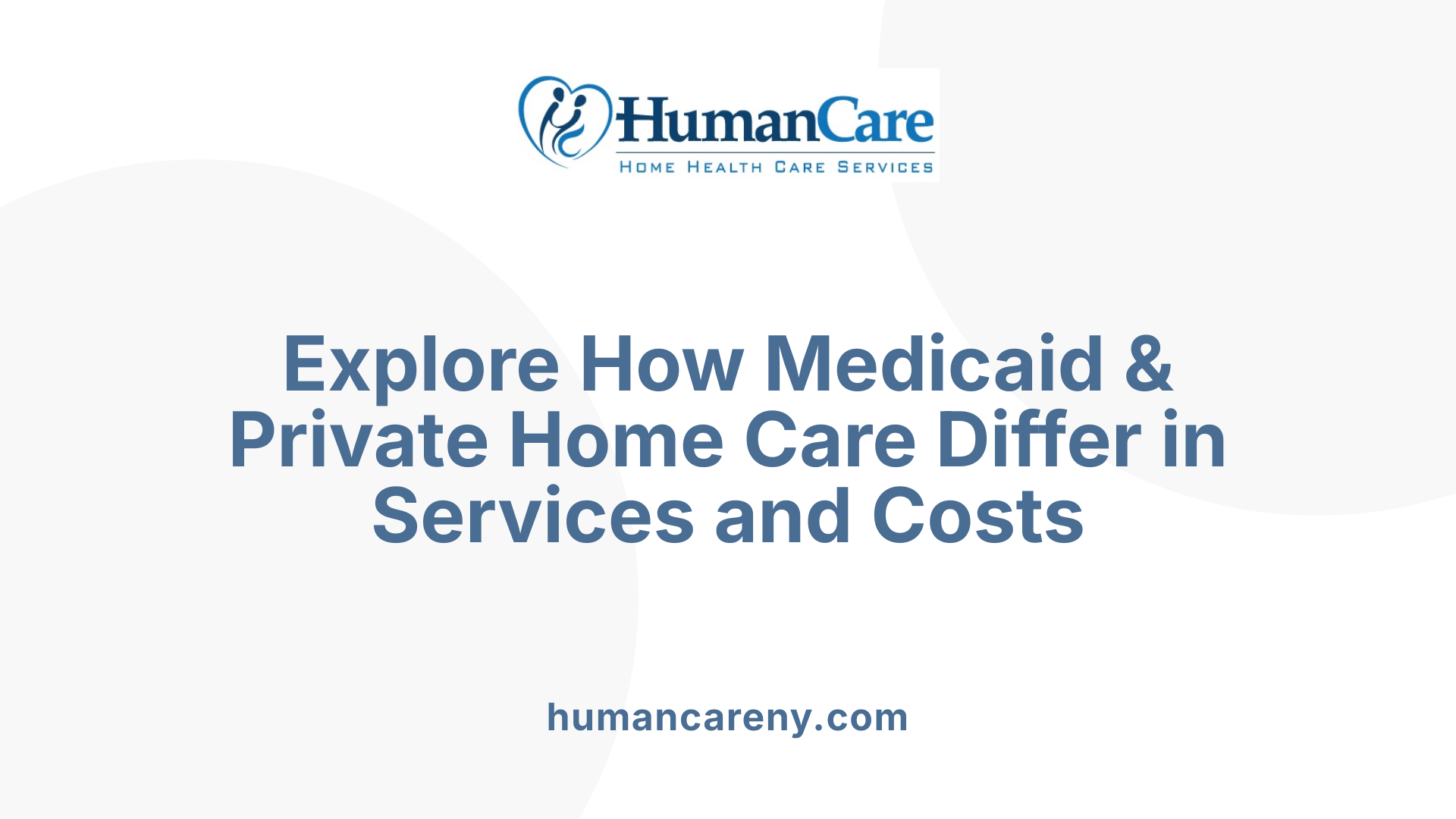
How do Medicaid-funded home care options compare to private pay home care?
Medicaid-funded home care is primarily designed for low-income individuals, offering comprehensive, long-term support that covers a wide range of services such as personal care, respite, home modifications, and medical assistance. It aims to promote independence and enable recipients to stay in their homes, often at a reduced out-of-pocket cost or for free if eligible. Unlike private pay home care, which families or individuals cover entirely out of savings or income, Medicaid support is subsidized by federal and state funds, making it more affordable for low-income populations.
Private pay home care, on the other hand, is paid directly by clients or their families and offers more personalized and flexible services. It can include specialized companionship, intensive personal care, or around-the-clock assistance. However, this option can be prohibitively expensive and is not dependent on income or assets.
Medicare largely focuses on short-term, medically necessary home health services for eligible individuals, primarily for recovery after hospitalization. It does not typically cover long-term custodial or supportive care, unlike Medicaid, which provides extensive coverage for qualifying people. In essence, Medicaid provides a targeted, cost-effective solution for those who qualify, whereas private pay services cater to individuals seeking customized care without restrictions related to income.
Overall, Medicaid home care supports the needs of low-income, disabled, or elderly individuals by providing broad, subsidized services, while private pay home care offers more privacy and flexibility but at a higher price and with fewer eligibility constraints.
Financial Aspects of Home Care Options
What costs and financial considerations are involved in Medicaid versus private pay home care?
The costs and financial considerations for Medicaid versus private pay home care vary widely. Private pay services typically require families to pay out-of-pocket expenses, which can range from approximately $4,000 to $6,400 monthly for part-time care in many areas. For around-the-clock assistance, costs can escalate, exceeding $27,000 per month in some states like California. Rates depend on location, the level of care needed, and the provider.
In contrast, Medicaid (or Medi-Cal in California) can cover many home care costs for eligible low-income individuals. Benefits may include in-home supportive services, skilled nursing, and medical supplies. Medicaid often covers 100% of costs related to long-term care, such as nursing home stays or specific medical equipment, contingent on meeting income, asset, and medical necessity criteria.
Other funding options include private long-term care insurance, which might offset some expenses but usually have strict underwriting and qualifying conditions. Veterans' benefits and community assistance programs also contribute to managing costs. For higher-income families, private pay remains the primary method of financing home care, with additional resources such as long-term care insurance and payment plans offering supplementary support.
What are the considerations for choosing between Medicaid waiver programs and private pay options?
Choosing between Medicaid waiver programs and private pay home care depends on individual healthcare needs, financial situation, and care preferences. Medicaid waivers are designed for those with long-term disabilities or seniors requiring assistance with daily activities. They typically provide extensive, personalized services at a lower cost because they are subsidized through Medicaid funding.
Eligibility for these waivers involves income and asset limits, along with demonstrating a level of care need comparable to institutional services. For eligible individuals, Medicaid waivers can cover services like personal care, home modifications, respite, and habilitation, greatly reducing out-of-pocket expenses.
Private pay options offer more immediate access and potentially broader service choices but can be financially burdensome. Those not qualifying for Medicaid or who want services outside of Medicaid coverage may opt to pay privately, which could be a significant financial commitment.
Deciding factors include current financial resources, health status, and the level of care required. It is advisable to consult with state Medicaid agencies and care providers to understand available services, eligibility, and long-term affordability. Ultimately, selecting the appropriate care approach involves balancing health needs with financial capacity and desired quality of life.
Deciding Factors for Care Choice

How can individuals decide between Medicaid waiver programs and private pay home care based on their needs?
Choosing between Medicaid waiver programs and private pay home care depends on several critical factors, including healthcare needs, financial capacity, and the level of service personalization desired.
Individuals with long-term disabilities, chronic health conditions, or seniors requiring ongoing assistance with daily activities often find Medicaid waivers to be an ideal option. These programs offer a broad range of in-home and community-based services, such as personal care, homemaking, and respite care, often at a lower cost as they are subsidized through Medicaid. Eligibility for these waivers depends on specific criteria like income, assets, and functional assessments demonstrating a need for a level of care comparable to that of a nursing facility.
For individuals who do not qualify for Medicaid or prefer more flexible, customized service options, private pay home care is a viable alternative. It offers personalized assistance tailored to specific preferences, including companionship, medication reminders, or specialized therapies. However, private pay services can be significantly more expensive, which may influence decision-making based on personal savings or insurance coverage.
It’s advisable for individuals and their families to consult with state Medicaid offices or home care providers to thoroughly understand eligibility requirements, the scope of covered services, and costs involved. This assessment helps determine the most appropriate, sustainable care plan tailored to the individual’s health conditions and financial situation.
In summary, a careful evaluation of health needs, financial resources, and service customization options is essential when deciding between Medicaid waivers and private pay options. This ensures access to suitable care that supports independence, well-being, and financial stability.
Payment and Service Models Supported by Medicaid
Medicaid offers diverse payment and service models to support in-home and long-term care services, accommodating the needs of low-income individuals and those requiring ongoing support.
One prominent approach is the support for self-directed care. Many states enable Medicaid beneficiaries to manage their own care arrangements, including hiring and supervising caregivers such as family members or friends. Under programs like Connecticut’s Community First Choice (CFC), individuals can hire relatives—except spouses or legally responsible individuals—providing them with greater autonomy over their care.
In addition to self-directed options, Medicaid programs frequently support family caregiver payments. Most states have policies that allow payments to family members for providing care, especially for individuals with intellectual or developmental disabilities. These payments are often facilitated through waiver programs (such as HCBS waivers), which cover services like personal care, homemaking, and respite care. The rules vary by state, but generally, these arrangements help acknowledge families' vital role in caregiving.
Managed care arrangements constitute another cornerstone of Medicaid's service delivery. Many states contract with managed care organizations (MCOs) to coordinate and deliver services. These plans often include provisions for supporting family caregivers, offering training, respite, and sometimes direct payments for caregiving. Managed care models are designed to improve efficiency, quality, and flexibility of services, ensuring beneficiaries receive tailored care while controlling costs.
| Model Type | Description | Services Covered | Notes |
|---|---|---|---|
| Self-Directed Care | Beneficiaries manage their care providers, including hiring family members | Home health aides, personal care, homemaking | Varies by state; requires setup and oversight |
| Family Caregiver Payments | Direct payments to family members as caregivers | Personal care, supervision, respite | Often linked with waiver programs; eligibility varies |
| Managed Care Arrangements | Managed by private organizations overseeing service delivery | Medical, therapeutic, personal care | Common in Medicaid managed care plans; may support caregiver services |
Supporting payment for private nursing home care is a core aspect of Medicaid. The program covers 100% of costs in Medicaid-certified nursing homes for eligible individuals, based on income, assets, and a level-of-care assessment. Most nursing facilities accept Medicaid, ensuring access to skilled nursing, rehabilitation, and other services at little or no cost to qualifying residents.
For in-home and community-based services, Medicaid primarily funds through waiver programs like HCBS, which cover services such as home health aides, personal care, and case management. These help individuals remain in their homes or community settings instead of institutional care.
While Medicaid generally does not cover room and board costs in assisted living or informal settings, some states offer additional support through specific waivers or supplemental programs. Eligibility depends on financial and functional criteria, with some states offering measures like spend-down programs or special trusts to assist individuals with higher incomes in accessing long-term care services.
Overall, Medicaid's flexible payment models aim to promote independence, support family caregiving, and deliver personalized, cost-effective care alternatives to traditional institutional settings.
Challenges and Practical Considerations

What are the challenges or disadvantages of Medicaid, and what should patients consider?
While Medicaid plays a crucial role in providing health coverage for low-income populations and supporting long-term and home-based care, it also presents certain hurdles. Access to providers such as mental health specialists, dentists, and other specialists can be limited. This is often due to lower reimbursement rates for Medicaid compared to private insurance, which can discourage provider participation.
Network limitations are another concern. Not all healthcare providers accept Medicaid, leading to potential delays or difficulties in finding suitable care. The availability of providers varies greatly by location, with rural and underserved areas experiencing more significant shortages.
Administrative processes can be complex and burdensome. During periods of policy changes or federal unwinding of continuous coverage mandates, many beneficiaries risk losing coverage unintentionally. Navigating renewal procedures and eligibility redeterminations requires proactive engagement, which can be challenging for vulnerable populations.
Furthermore, the variability in coverage—from state to state and among different program types—can impact the availability of specific services like home health aides, personal care, or specialized therapies. Patients and caregivers should stay informed, complete required documentation promptly, and utilize available support services to maintain their benefits.
Understanding these potential barriers can help individuals better prepare and Advocate for their needs while exploring supplementary options such as community programs, private insurance, or veteran benefits when possible. Careful planning and active participation in renewal and care coordination are essential for sustaining access to Medicaid-supported care.
Special Programs and Innovations in Medicaid Home Care

How do PACE and MFP programs improve home care options?
The Program of All-Inclusive Care for the Elderly (PACE) is designed for seniors who require comprehensive care. It provides coordinated services from a team of healthcare professionals, enabling eligible individuals to live at home while receiving all necessary medical and social services through Medicaid. Participants benefit from a personalized care approach, which covers medical care, therapy, transportation, and social activities.
The Money Follows the Person (MFP) initiative aims to transition individuals from institutional settings like nursing homes back into the community. It offers support for home modifications, personal assistance, and community-based services, fostering independence and reducing long-term care costs.
What are some innovative care models in Medicaid?
States are experimenting with models that allow consumers more control over their care. Consumer-directed programs enable individuals to hire and manage their own caregivers, including family members, under federal authorities like 1915(c) waivers. These programs promote independence and personalized support, often with training and supervision for consumers.
Models such as BOOST, Bridge, CTI, and GRACE focus on transitional care, helping individuals safely transfer between care settings and avoid hospital readmissions or institutionalization. These innovative approaches aim to improve health outcomes while containing costs.
Are there state-specific programs tailored for different populations?
Many states develop unique programs targeting specific groups. For example, North Carolina offers CAP/DA and CAP/Consumer-Directed programs for community-based services, supporting people with disabilities and seniors. The state’s Money Follows the Person program helps residents move out of institutions into homes, providing necessary services.
In Indian Country, programs by organizations such as Tanana Chiefs Conference and Cherokee Nation demonstrate tailored HCBS initiatives. These programs respond to cultural needs while providing essential services like personal care, respite, and home modifications.
| Program Name | Focus Population | Services Provided | Notable Features |
|---|---|---|---|
| PACE | Older Adults | Medical, social, transportation | Interdisciplinary team, all-inclusive services |
| MFP | Transitioning from institutions | Home modifications, personal care | Supports community integration |
| CAP/DA | Disabled adults | Community-based healthcare | Personalized case management |
| Cherokee Nation (HCBS) | Indigenous communities | Personal care, community support | Culturally tailored programs |
Medicaid's innovative initiatives continue to evolve, aiming to expand access, improve quality, and support individuals in living independently in their communities.
Key Factors in Making a Choice
Assessing needs and eligibility
When choosing between traditional Medicaid and Medicaid waivers, the first step is understanding an individual's specific healthcare needs and the eligibility criteria. Traditional Medicaid provides basic coverage for general health issues like office visits, hospital stays, and preventive care, suitable for short-term illnesses or routine health management.
Medicaid Waivers, especially Home and Community-Based Services (HCBS), are tailored for those requiring long-term, ongoing support such as assistance with daily activities, home modifications, or support for disabilities and chronic conditions. Eligibility for these programs involves financial and functional assessments, including income limits and assistance needed with Activities of Daily Living (ADLs).
Comparing costs and services
Cost considerations are crucial. Medicaid covers in-home care in all states, often supporting alternatives to nursing homes. While regular Medicaid plans cover certain personal care services, HCBS waivers provide a broader spectrum, including personal care, respite, and home modifications, though they may have waitlists.
Private pay options, long-term care insurance, and veterans’ benefits are additional avenues for financing services not fully covered by Medicaid. For example, private pay is often used for more personalized care like private duty home care, which may be unavailable through Medicaid.
Considering personal preferences and support systems
Personal preferences, family support, and available community resources greatly influence the best choice. Some individuals prefer to self-direct their care, hiring family members or friends as caregivers, which many Medicaid programs now support.
In contrast, others may rely on managed care plans or institutional care if they lack strong informal support networks. Facilities like assisted living are often not covered by Medicaid but can be financed through alternative means such as state assistance programs.
Balancing the type of care needed, eligibility, and personal values helps determine the most appropriate and sustainable home care options for each individual.
| Factor | Medicaid Approach | Private or Other Options | Additional Notes |
|---|---|---|---|
| Needs suitability | Short-term and basic healthcare | Long-term, personal, and home modifications | Eligibility varies; assessments required |
| Cost | State-funded, often with copays | Out-of-pocket, insurance, veterans' benefits | Waitlists for some waivers |
| Personal preferences | Self-directed or managed care | Family caregiving, private duty care | Flexibility depends on program |
| Support system | Formal and informal support | Community resources, support groups | Community-based services are widespread |
Deciding on the best home care option depends on a comprehensive evaluation of these factors, aligned with individual health needs and personal circumstances.
Making an Informed Decision for Optimal Care
Choosing between Medicaid waiver programs and private pay home care ultimately hinges on a detailed assessment of individual health needs, financial resources, and personal preferences. Medicaid offers extensive, cost-effective long-term support for eligible individuals, with tailored services designed to maintain independence and promote community living. Private pay, though potentially costly, provides flexibility and access to a broad array of personalized services without strict eligibility criteria. Carefully evaluating these factors, consulting with healthcare providers, and understanding the scope of coverage can enable individuals and families to select the most suitable care model that aligns with their health goals, financial realities, and lifestyle. By understanding the nuances of each option, caregivers and seniors can navigate their choices confidently and secure the support necessary for quality, sustainable home care.
References
- Which Is Right for You, Traditional Medicaid or Medicaid Waivers?
- Medicaid and In-Home Care: Eligibility, Benefits & State Rules
- What is Medicaid Home Care (HCBS)? - KFF
- Private Duty Home Care vs. Medicare/Medicaid: Understanding the ...
- Does Medicaid Pay for Assisted Living? - National Council on Aging
- What is a Medicaid waiver program? Eligibility, rules, and more
- Home & Community-Based Services 1915(c) - Medicaid
- Home- and Community-Based Services - CMS
- Paying Family Caregivers through Medicaid Consumer-Directed ...





